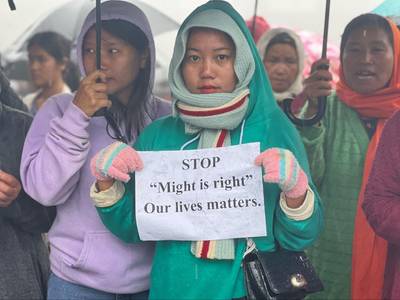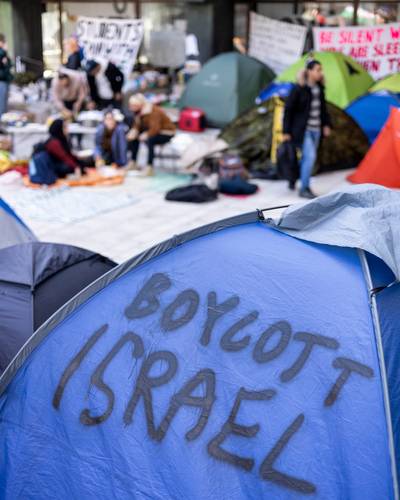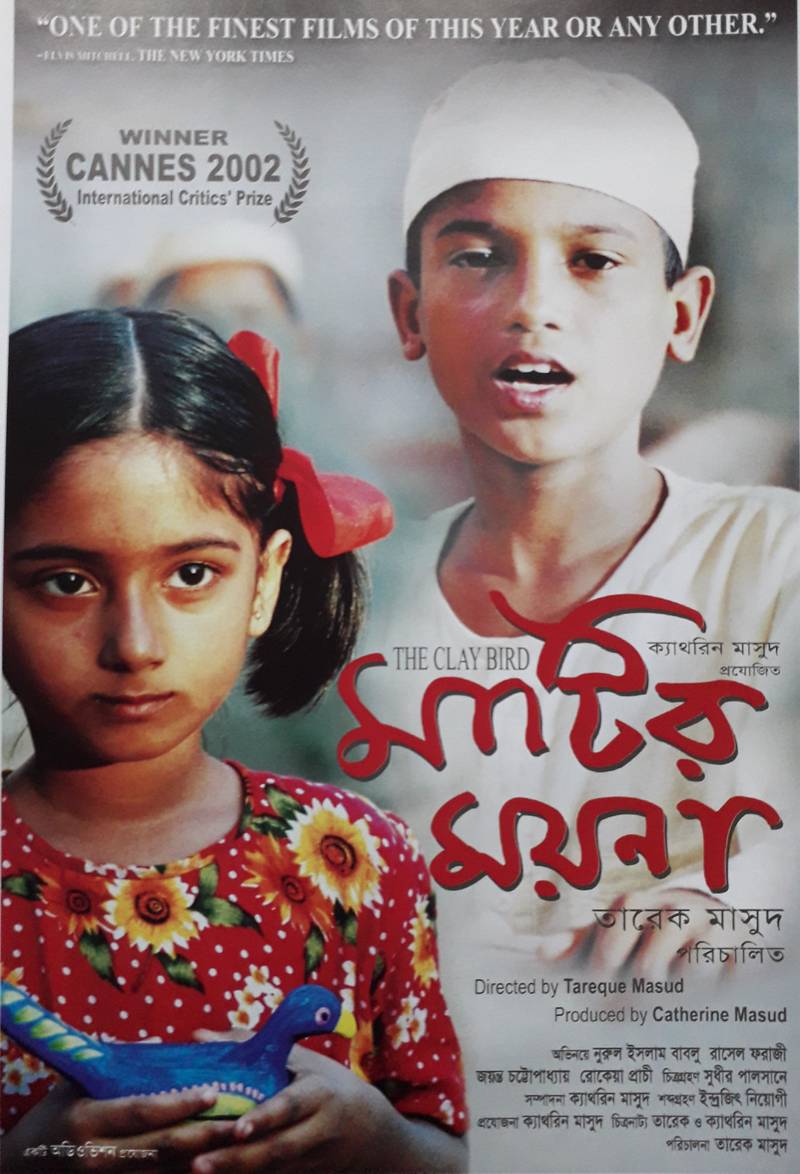

Matir Moina by Tareque Masud, the 1st Bangladeshi film to be invited to the Cannes film festival and to compete in the Oscars for Bangladesh
Valentina Vitali is Professor of Film Studies at the University of East London and co-director of the Centre for Creative and Cultural Practice (CCP, UEL). Her research explores the intersection of economics, history and film aesthetics from a comparative perspective. Valentina is currently working on a AHRC-funded project on video online distribution and independent cinema in South Asia.
How important have film festivals been for the circulation and global visibility of South Asian cinemas? This question, thus put, assumes a focus on a particular kind of festival: one based in the Global North and featuring new productions, with all the paraphernalia that these imply—juries, awards, distributors, and the press, along with audiences. In cinema, as in other sectors, ‘globalisation’ tends to be a one-way affair. For (too) many, acquiring a ‘transnational, global’ audience means featuring at a European or North American festival. But my opening question is worth asking. For this essay, I have looked at the presence of the many cinemas of South Asia through three representatives at very different European film festivals—Berlin, Locarno, and London—over a period of seventy years.
The presence of South Asian films at these festivals can be broken down into four phases. From the 1950s to the 1960s (Phase 1), the only South Asian filmmaker to feature at Berlin, Locarno, or London was Satyajit Ray: Indian, male, and proposing a type of realist cinema in tune with 1950s European cinemas’ main tendency. In the 1970s and 1980s (Phase 2), we also begin to see representative figures of New Indian Cinema: Shyam Benegal, Mrinal Sen, G. Aravindan, Adoor Gopalakrishnan, Kumar Shahani, and Mani Kaul. That is Indian male filmmakers whose work was more aligned with the avant-garde aesthetics of 1970s European ‘new cinemas’. It is only in the late 1990s and early 2000s (Phase 3) that, for a short period, European festivals began showing mainstream, Bombay-made Hindi cinema along with some independent South Asian political films—for instance, the documentaries of Indian director Anand Patwardhan.
During Phases 1, 2, and 3, almost all of the South Asian films shown at European film festivals were Indian. The occasional Sri Lankan film featured in London and Locarno every few years was the exception. Often, these consisted of films by Sumitra or Lester James Peries, but not exclusively. As for Indian films, in the late 1990s their presence at European film festivals was given a new spin. Phase 3 is marked by the screening of Mani Ratman’s Bombay (1995) in Locarno. Two years later, the London festival added a new section called ‘India and Pakistan in Focus’ even though it actually featured only one non-Indian production: a Pakistani film that had already been shown a few years earlier, one of the rare instances of non-Indian South Asian presence at the festival. Above all, Phase 3 was boosted by a series of events, advertised under the title of ‘Indian Summer’, that were organised in 2002 in London to promote Andrew Lloyd-Webber’s Bombay Dreams, a stage musical with a music score by Hindi cinema maestro A. R. Rahman and stage choreography by Hindi cinema choreographer Farah Khan. For the occasion, department store Selfridges organised a festival of Indian food and fashion, British television Channel 4 broadcast a series of big-budget Hindi films, the Victoria & Albert Museum held an exhibition of Indian film posters, and the British Film Institute ran an 8-month season of South Asian (actually, again, mostly Indian) films misleadingly entitled ‘Imagine Asia’. That same year (2002), the Locarno festival also held its own ‘Indian Summer’ season. The Bollywood hit Lagaan (2001) was chosen for Locarno’s competition section the year before.
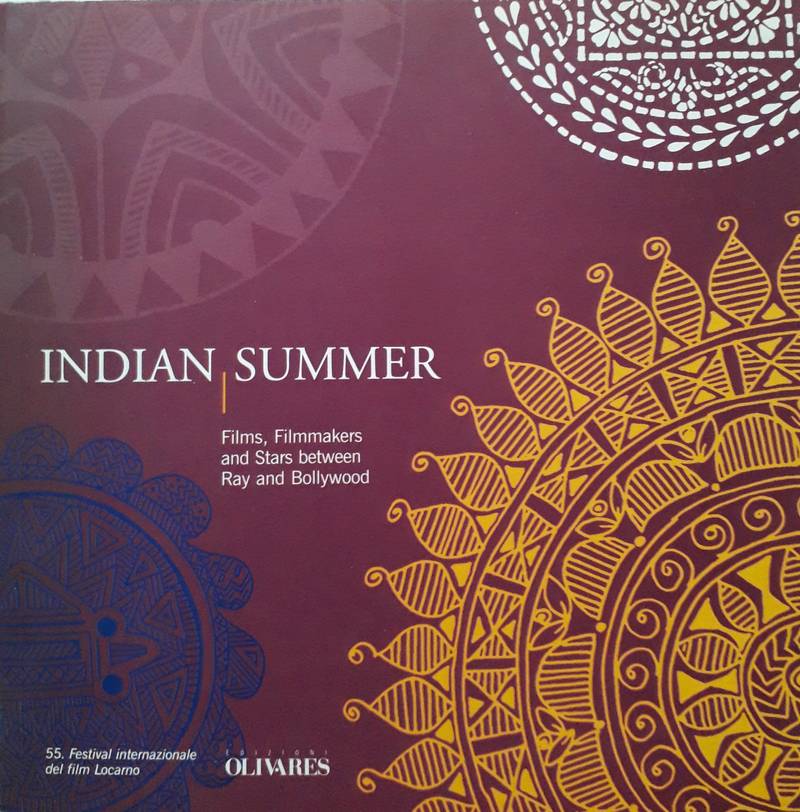

Indian Summer at Locarno Film Festival 2002
Throughout Phase 3 Indian films dominated, as they had done in the preceding decades. What characterised the late 1990s was the shift away from Indian avant-garde or realist films to Hindi big-budget productions. But Phase 3 was also marked by European critics’ bafflement and their efforts to both underline and justify what they saw as ‘the strangeness’ of Indian (Hindi) mainstream films – so unlike anything most critics were familiar with, be it realist à la Satyajit Ray or modernist à la Mani Kaul. Indeed, the presence of mainstream Hindi films at major European festivals was short-lived. By the mid-2000s, new priorities took hold. I call what followed the ‘Talent Phase’ (Phase 4)—a moment in which, at Berlin, Locarno, and London, among other festivals, small-budget films from other South Asian countries, as well as small-budget Indian films in languages other than Hindi, gradually replaced mainstream Hindi films. This remains the state of things today.
This table shows the developments I have outlined:
| Afghanistan | Bangladesh | Bhutan | India | Myanmar | Nepal | Pakistan | Sri Lanka | |
|---|---|---|---|---|---|---|---|---|
| 1950s | • SR | |||||||
| 1960s | •• SR | |||||||
| 1970s | ••• NIC | • | ||||||
| 1980s | • | ••• NIC | • | |||||
| 1990s | • | ••• B | • | • | ||||
| 2000s | • | •• | • | ••• I/B | • | •• | ||
| 2010s | • | • | • | ••• I | • | • | • | • |
It is tempting to explain away this situation with the fact that, unlike India, several countries in South Asia never had a large film industry. But historically, this has not stopped films made in as small a film industry as Sri Lanka’s from featuring at European festivals, at least not since the 1970s. Further, how to explain the absence of films from South Asian countries that had regular film production then, such as Bangladesh, Pakistan, or Afghanistan, at European festivals? In short, what are the reasons for this belated appearance at European film festivals, from the mid-2000s onward, of films from a range of South Asian countries?
How to explain the absence of films from South Asian countries that had regular film production then, such as Bangladesh, Pakistan, or Afghanistan, at European festivals? In short, what are the reasons for this belated appearance at European film festivals, from the mid-2000s onward, of films from a range of South Asian countries?
Film festivals do not deal with distribution, exhibition, or marketing directly. However, what festivals do does connect with these sectors of the film industry. Felicia Chan, who has looked into arrangements between distributors, sales agents, and festival programmers, notes that such arrangements often lack transparency; many have a confidentiality clause (Chan 2011: 257). There are reasons for this. The emergence of South Asian films at European festivals in the mid-2000s—and, with them, the creation of a ‘global, transnational’ (read European and North American) audience for South Asian films—is partly rooted in a contradiction that many festivals face and that confidentiality clauses are meant to contain. A tension between two functions festivals are expected to fulfil: on the one hand, the festival as a promoter of films and filmmakers; on the other, the festival as a market place for the industry. As one of the agencies that mediates industry relations, the International Federation of Film Producers Associations (FIAPF) recognises fifteen A-Category (henceforth A-Cat) festivals, eight of which are European: Berlin, Cannes, Karlovy Vary, Locarno, San Sebastian, Tallinn, Venice, and Warsaw. In 2006, the former director of the Edinburgh film festival and well-known critic Mark Cousins noted that regulations dictate that to rank as an A-Cat, a festival has to screen at least fourteen brand-new films as part of its official competition. Further, these films cannot overlap across festivals (Cousins 2006). This means that for there to be fifteen A-Cat festivals, at least 210 brand new ‘quality’ films annually have to be found, where ‘quality’ means ‘good enough’ to screen at a festival’s competition section and thus meet the aesthetic criteria and expectations of distributors, as well as those of a largely European public. Dina Iordanova reports that critics repeatedly remarked that, annually, no more than twenty to forty films were ‘artistically strong enough’ to merit screening at major festivals. Inevitably, as each A-Cat festival vied to programme them, competition among large festivals grew fiercer and fiercer (Iordanova 2009: 28).
We are facing an all too familiar conundrum: at one level, festivals appear to face a shortage of international ‘quality product’. At another level, a glance at the most international of festivals shows that the countries featured can be counted on the fingers of two hands and are often the same year after year.
Can it be true that in the late 1990s and early 2000s, as cheaper technology made filmmaking more accessible, no more than forty ‘quality films’ were made annually in the whole world? Admittedly, accessible technology is not a guarantee of quality, but the pool of available films did increase significantly. We are facing an all too familiar conundrum: at one level, festivals appear to face a shortage of international ‘quality product’. At another level, a glance at the most international of festivals shows that the countries featured can be counted on the fingers of two hands and are often the same year after year. Historians claim that this stemmed from a blockage in the demand-and-supply chain. I argue, rather, that what was perceived as a scarcity of ‘quality product’ was in fact a lack of fit between what critics (and European distributors) understood to be ‘a good film’, and what filmmakers on the ground (in our case, in South Asia) took a ‘good film’ to be. Caught in this contradiction, festivals began looking for new ways to feed their own demand. And what better to do to beat the rush for ‘quality product’, than for a festival to produce the very kind of film it wants to see in its competition section?
Not all festivals seek FIAPF accreditation, but even the very successful Rotterdam festival, which does not, relies on links with distributors and sales agents to guarantee its supply. In 1988, Rotterdam launched the pioneering Hubert Bals Fund. Named after the festival’s first director, the fund has since helped filmmakers from the Global South get their projects off the ground. By the early 2000s, other festivals launched support activities for emerging filmmakers, effectively embarking on various stages of production: Locarno’s Open Doors (2002), Berlinale Talents (2003), Berlin’s World Cinema Fund (2004), Cannes’ Residence (2000), and Atélier (2005). Like the Hubert Bals Fund, these programmes often prioritise filmmakers from the Global South. In 2004, Berlinale Talent Campus was exported to Asia for the first time: fifty ‘film talents’ from all over India joined the workshops of Osian’s Cinefan Film Festival to learn from established directors and DoPs how to make ‘quality films’. Locarno’s Open Doors concentrates on one region of the Global South every few years; in 2016–18, South Asia (bar India) was its focus.
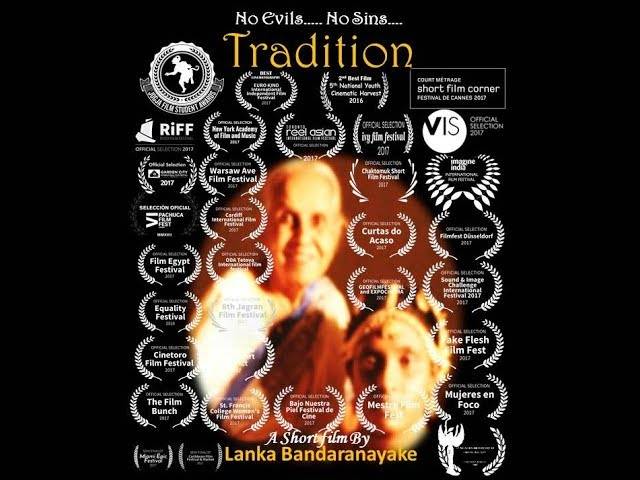

Tradition by Lanka Bandaranayake, screened at Locarno Open Doors 2016-18 and at many other festivals
To be clear, these programmes should be welcomed. They help European festivals expand their geographic scope and afford filmmakers from South Asia, among other regions in the Global South, breakthroughs on the international scene. But the price paid for such patronage can be very high. Production support from festivals is conditional, and the conditions often verge on (and end up shaping) the supported film’s content and aesthetics. Festivals want what they and their European or North American audience deem to be ‘quality product’. As then programme coordinator Paolo Bertolin (2017: 338) explained:
“The professional side of Open Doors provides hands-on training opportunities in international co-production practice, while the screening side of Open Doors, being accessible to the general public, can play a part in creating an audience for the results of future [Open Doors-initiated] production partnerships.”
As far as films from South Asia are concerned, festivals’ drive to ‘create’ an audience for the films they help produce has tended to result in films that speak primarily to European critics, distributors, and audiences’ imaginaries of ‘South Asia’. As Indo-Pakistani filmmaker Meenu Gaur put it when she recounted her experience at Berlinale Talent:
“Filmmakers from certain regions in the world (Asia, Africa) have to be persistently ‘representative’, while films from Europe and the United States can be about the ‘individual’. Issues for us, individuals for them.”
Over the years, programmes such as Berlinale Talents have helped exacerbate what was already known in the mid-2000s as the ‘festival film syndrome’: the pressure on Global South filmmakers to appeal to European and North American audiences’ exoticism, their desire to recognise, in an Afghani or Pakistani film, their idea of what Afghanistan or Pakistan must be like, or, in the photography of a Bhutanese or Nepali production, snapshots of their travels there, not to mention the often condescending ‘ghetto’ aesthetics of many a festival film on ‘the plight’ of Indian women and children. Of course, not all films produced under these ‘talent’ programmes are of this ilk, but the tendency is there, as is the pressure on filmmakers.
As far as films from South Asia are concerned, festivals’ drive to ‘create’ an audience for the films they help produce has tended to result in films that speak primarily to European critics, distributors, and audiences’ imaginaries of ‘South Asia’.
Open Doors, Berlinale Talent, and similar initiatives are open equally to male, female, and non-binary filmmakers. But how do women filmmakers actually move in this landscape? At festivals and in the industry at large, women filmmakers have tended to find more opportunities in documentary, television, or both—partly because documentaries generally require lower investment and infrastructure. Documentaries produced independently can also be made at the margins of the industry, where most women filmmakers still tend to find themselves. Among the many examples from South Asia to have acquired international visibility in this sector partly thanks to festivals are Snow Hnin Ei Hlaing, from Yangon, whose documentary Midwives (2022) was selected and awarded at several festivals and is now available to watch on BBC IPlayer; Diana Saqeb, from Kabul, whose documentary Mohtarama (2012) featured at Locarno and helped her selection at the Venice and Locarno festivals with fiction films; or Sharmeen Obaid-Chinoy, whose HBO-produced documentary Saving Face (2012) earned her an Academy Award, Pakistan’s first Oscar. Again, not all South Asian women at festivals are documentary-makers. For instance, Dechen Roder, from Bhutan, broke through on the international scene with the feature-length fiction Munmo Tashi Kyidron, aka Honeygiver Among the Dogs (2016). It is not a coincidence that many of the internationally visible women documentary-makers from South Asia are also activists: Diana Saqeb, Sharmeen Obaid-Chinoy, and Madhushree Dutta, one of India’s best-known documentary-makers, are cases in point.


Midwives by Snow Hnin Ei Hlaing at Independent Spirit Awards in Los Angeles
In the last ten years, the situation has evolved in interesting ways. Since the 2010s, women in fiction filmmaking have fared much better with online video distribution (VOD) than with festivals. Even if a good number of women whose fiction films and series can now be seen on platforms like Netflix, Amazon Prime, Zee5, Chorkhi, or UrduFlix, to name but a few, have, at some point or another, passed through a festival. But these developments also coincide with an equally interesting rise in the number of South Asian women making genre films, including horror and crime movies. In this area, video online platforms have proved to be a more fertile ground for South Asian women filmmakers than European festivals, both as distributors and producers. Puja Jatinder Bedi’s Ghost (2012), Reema Kagti’s Talaash, aka Talaash: The Answer Lies Within (2012), Devika Singh’s Rise of the Zombie (2013), and Terrie Samudra’s Kaali Khuhi, aka The Black Well (2020), are examples within the horror genre. They all had a very short release in domestic cinemas or at a festival, like, for instance, Suba Sivakumaran’s House of My Fathers, aka Mouna Kaandam, aka Nomiyana Mathakaya (2018). Unlike the latter, they have since been accessible to a transnational audience via global online distribution platforms. Take Rise of the Zombie, a film that, partly because of its low production value, would have had great difficulties circulating outside of India or, indeed, receiving significant distribution across India. Dubiously billed ‘India’s first zombie original film’, it circulates today on Netflix, from which it addresses a youth audience that is indeed global. A more enigmatic example is Puja Jatinder Bedi’s Ghost, a film that moved at the margins of the industry in more ways than one. Just before its official release, Ghost, which was the first feature film directed by a young woman in a genre and industry dominated by men, was severely cut by the censors for its unorthodox use of religious iconography and splatter imagery. The Indian press called it, preposterously, India’s most violent film. It is impossible to say whether the same treatment would have been meted out had Ghost been directed by a man. I think not. Be that as it may, the censors’ heavy-handed approach helped put Ghost in the headlines beyond the filmmaker’s expectations. Only days before the film’s release, the director announced that Ghost could count on a large female following. And so it did, continuing henceforth to gather viewers on YouTube, interfering advertising notwithstanding.
With regard to VOD platforms as producers, one of the most symptomatic example remains Meenu Gaur, whose trajectory as a filmmaker includes selection in the Foreign Film category at the Oscars for Pakistan, ‘quality product’ training at Berlinale Talents and Open Doors, selections and awards at several festivals, and - impervious to festivals’ pressures to conform to their ‘Global South ghetto’ aesthetics - gradually to her own feminist-gothic crime series for Zee5: Qatil Haseenaon ke Naam aka An Ode to Femmes Fatales (2021), ‘an anthology of six stories of ordinary women who find extraordinary ways of solving their problems’ (IMDB). Meenu Gaur has since been commissioned episodes of a series and a film adaptation, both for BBC. Her early feature films, always co-directed with Farjab Nabi, combined comedy or satire with the tropes of other popular genres, circulate transnationally via global online platforms, and make ‘strange’ viewing for European festivals and critics. I doubt most European festival would have helped Meenu Gaur produce and screen globally something as original and as rooted in its place and time as Qatil Haseenaon ke Naam.
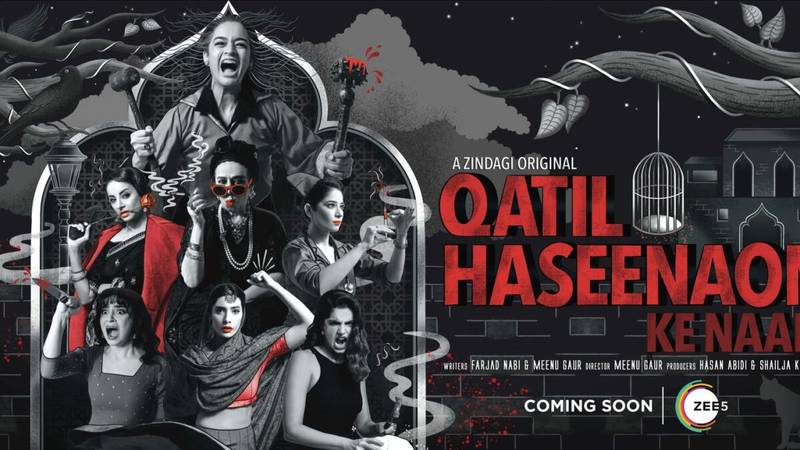

Qatil Haseenaon ke Naam, series by Meenu Gaur for and on Zee5
In 2015 Berlin launched Berlinale Series, a festival section aiming to do ‘justice to changing viewing habits and the growing significance of serial storytelling.’ The festival catalogue goes on to acknowledge
the many important aesthetic-artistical, dramaturgical and formal developments of audiovisual storytelling taking place in this field. Creative visions, budget and the talent involved are already on a par with film productions. (Internationale Filmfestspiele Berlin)
The assumption, more or less spelled out, is that series took all the years prior to 2015 to measure up to film productions. Hence the inauguration, this year 2023, of a Berlinale Series Award. In reality, serial storytelling has been part and parcel of cinema since the 1910s. What neither the award nor the catalogue’s description of the Berlinale Series seem willing to acknowledge is a new chapter in the relationship between cinema and television. This time around, a relationship marked by the financial weight and expanding market share of video online companies as both producers and a form of private television. Marginalised as they have been historically in the film industry and having found some refuge in television for decades, women filmmakers are thus picked up by this new configuration, not least, perhaps, because some VOD platforms are run by TV channels. It is not a coincidence that one of the competitors in the Berlinale Series this year is Dahaad, aka Roar, a crime series directed by Indian filmmakers Zoya Akhtar, Ruchika Oberoi, and Reema Kagti—the same Reema Kagti who directed the Indian horror neo-noir Talaash. One of India’s most successful ventures in TV production was, after all, the Zee Horror Show (1993–2001), a collaboration between low-budget, peripheral, but cult horror filmmakers Ramsay Brothers and Zee TV, India’s first private television channel, which began all-day broadcasting in 1993.
In this new, 2020s formation and as producers, video online platforms are a relatively new player. The history of cinema teaches us that the newer a sector is, the more open it is to women behind the camera. This was so in the early days of cinema and continues to be so with VOD, for now at least, and especially with less corporate, more local platforms. Often, women are also paid less; historically, they have constituted a cheaper labour force than men, in cinema as in other industries. There are only so many ‘ghetto’ films festivals can ask filmmakers from the Global South to make. Having found higher degrees of support and even openness from unexpected quarters, women filmmakers like Meenu Gaur and Reema Kagti are succeeding not only in making the kind of film they want to make. They are simultaneously changing the festivals’ inward-looking policies. Whether this will bring changes for the better in the long term is too early to say. Critics may object that Zoya Akhtar is already a well-established figure in the Hindi film industry and that festivals should focus instead on struggling emerging filmmakers. They are right, but one thing is certain: European and North American festivals are beginning to realise that if they want ‘quality product’ from the Global South - to be actually ‘international’ - they will have to revisit their understanding of what is and is not ‘quality’ so as to account for criteria that are not exclusively European or North American.
